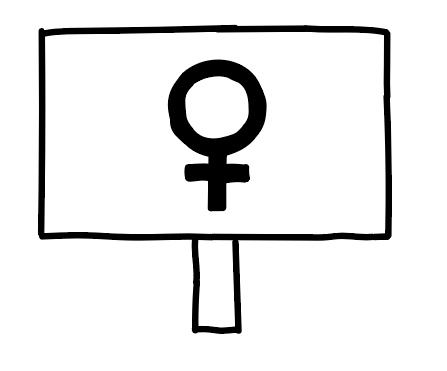Feminism Throughout the Years
breaking down the waves of feminism

Feminism has changed throughout the years, a change described by historians in “waves”. There are three phases, or “waves” of feminism.
The first wave of feminism started in the early 20th century. In it, women fought for property rights and promoted the idea that women are people and not just objects owned by their husbands.
Through the first wave of feminism, it became more normal for women to be single and not get married.
In many cultures, though, this wave has not hit.
In countries like Niger, Chad, Mali, Bangladesh, Guinea, Central African Republic, Afghanistan, Yemen, India, and Pakistan, arranged teenage marriages still exist, which many people in America deem old fashioned.
One of the most important things brought about by the first wave of feminism was a women’s right to vote, which was successful when the 19th amendment was passed in 1920.
The second wave of feminism started in the 1960s and lasted until the 1980s. This phase focused on equality and discrimination in a broader way than its predecessor. It took on the slogan “the personal is political.”
This wave of feminism pushed for a change in what jobs a woman can do. Prior to this time period, women stayed at home and took care of their families. However, during this wave of feminism, women were encouraged to join the workforce.
The medical field was transformed, as women were allowed to seek higher positions than just a nurse, like a doctor or a surgeon. These feminists also fought for equal pay and no sexual harassment in the workplace.
This phase developed over time, eventually paving the path for the gay liberation movement.
The third phase is the most modern, starting in the 1990s and ending in the 2010s.
This phase focused on a more modern interpretation of women empowerment— things like sexuality, femininity, and masculinity. It also focused on the sexualization of women in the media.
This wave accomplished a new image of what a woman is. Before this wave, women were either seen as weak, submissive and prudish or promiscuous, aggressive and emasculating. The feminists in this wave strived for a more powerful woman in control of her sexuality.
Feminism is ever-changing and waves will continue to come and go. While women have more rights than they did when feminism first started, many female empowerment groups still work hard to start the fourth wave of feminism.

Olivia Sherlock is a Story Editor for the Tiger Print. She is a senior, a swimmer and a professional controversial opinion writer. She would like to...



